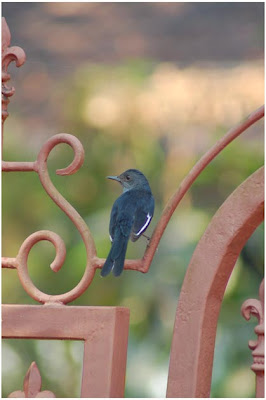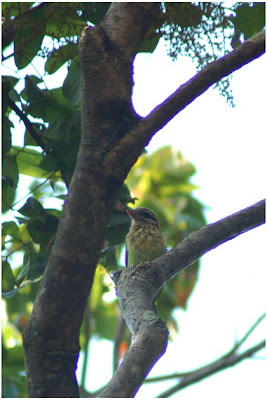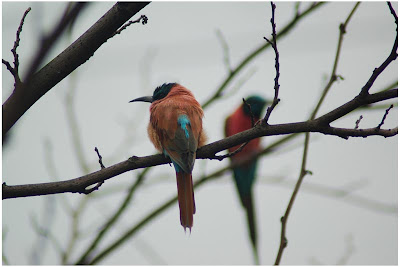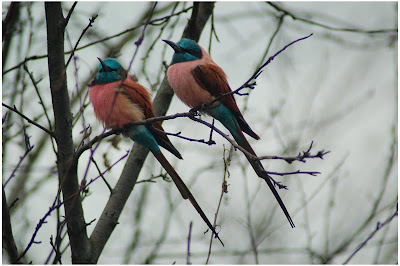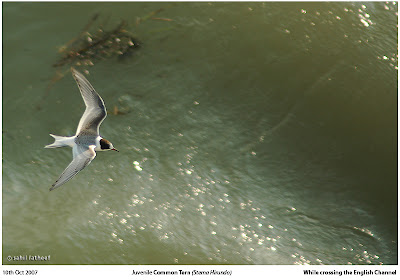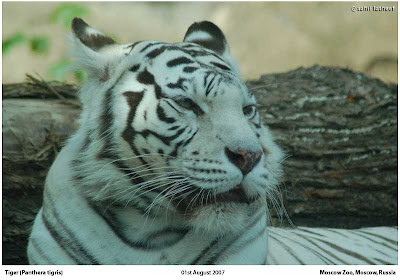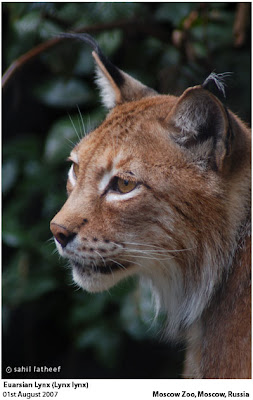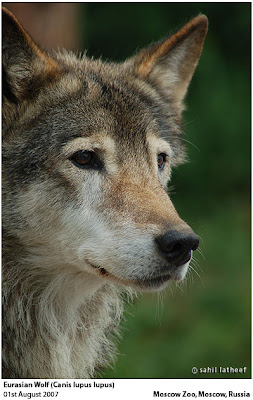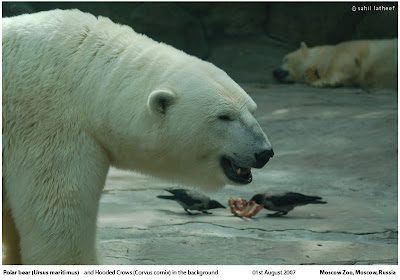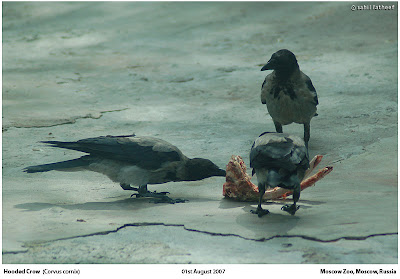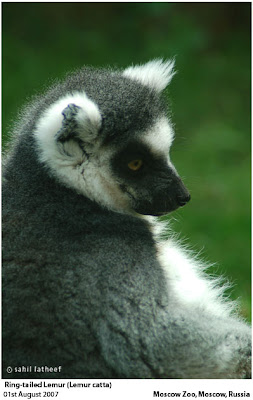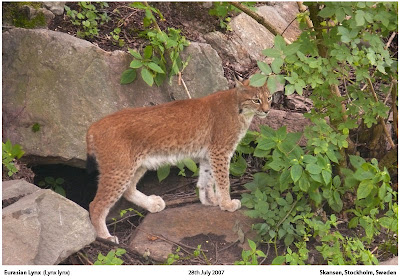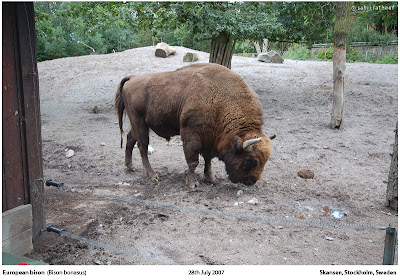Sunday, December 30, 2007
Thursday, December 20, 2007
Carmine bee-eater
As horrible weather has kept me captive of the indoors I decided to try my hand (after a long time) at one of my old passions - Sketching. Sadly all I could find last night as I sat down was one Black pen. Nonetheless I had a go at a Carmine bee-eater (Merops nubicus) from photographs of the species I had take a few months ago at the Rotterdam Zoo.
Here it is .......
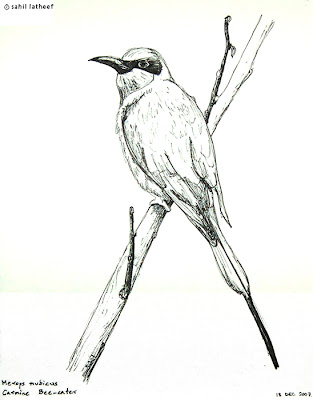
Here are some of the snaps.
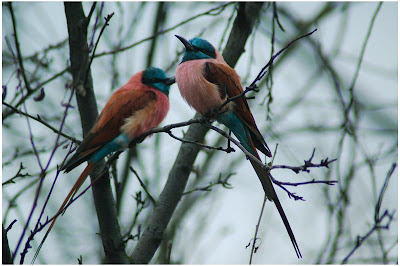 Though quiet small the Aviary at the Rotterdam Zoo has some great birds and offers great photo ops.
Though quiet small the Aviary at the Rotterdam Zoo has some great birds and offers great photo ops.
Labels:
Aquarium / Zoo / Captive,
Birds,
NatureArt,
Netherlands
Sunday, October 07, 2007
Birding @ Scheveningen Beach
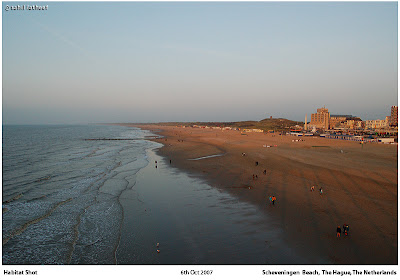 As I prepare to leave my home for the last two years in Rotterdam, I made a small trip to the Scheveningen Beach in The Hague. While strolling down the cold sandy beach I laid my eyes on a lot of bird activity on a small rocky pier covered in green sea weed and moss.
As I prepare to leave my home for the last two years in Rotterdam, I made a small trip to the Scheveningen Beach in The Hague. While strolling down the cold sandy beach I laid my eyes on a lot of bird activity on a small rocky pier covered in green sea weed and moss.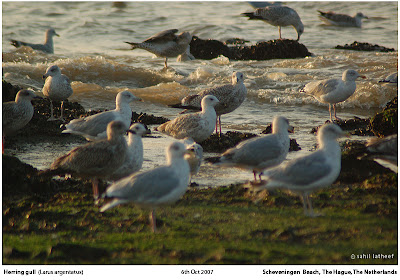 The main inhabitants were the Herring gulls (Larus argentatus)
The main inhabitants were the Herring gulls (Larus argentatus)
 But on closer inspection I found some Ruddy Turnstones (Arenaria interpres) amidst the Gulls. Though these are quiet common waders in this part of the world and also quiet frequently sighted along coastal areas back home in India (And surely at Uran and Sewri in Mumbai) I always managed to miss them, although I am not sure if I had seen them in Uran during the first Mumbai Bird Race.
But on closer inspection I found some Ruddy Turnstones (Arenaria interpres) amidst the Gulls. Though these are quiet common waders in this part of the world and also quiet frequently sighted along coastal areas back home in India (And surely at Uran and Sewri in Mumbai) I always managed to miss them, although I am not sure if I had seen them in Uran during the first Mumbai Bird Race.So most probably this is another 'lifer'. Here some more snaps of the Turnstones.
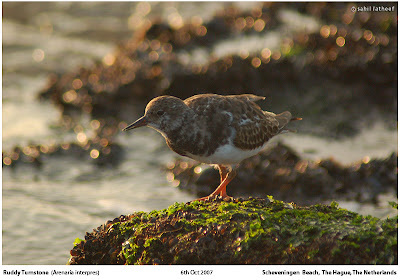
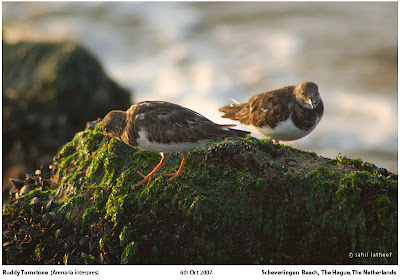


 I shall end this (probably) last posting as a Dutch Resident with this snap of the sun setting into the North Sea.
I shall end this (probably) last posting as a Dutch Resident with this snap of the sun setting into the North Sea.
Thursday, August 02, 2007
Moscow Zoo
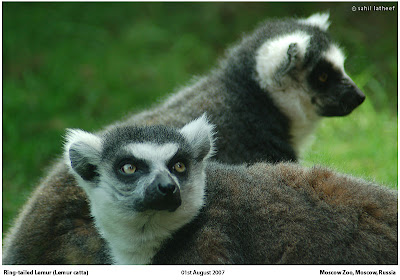 These amazing lemurs (like all other members of the Lemur Family) are only found on the island of Madagascar.
These amazing lemurs (like all other members of the Lemur Family) are only found on the island of Madagascar. The Orangutan enclosure with one the city famous Seven Sister buildings in the background.
The Orangutan enclosure with one the city famous Seven Sister buildings in the background. This photo was taken from the bridge that connects the two parts of the zoo.
This photo was taken from the bridge that connects the two parts of the zoo. The highly endangered Victoria Crowned Pigeon (Goura victoria). One of three superficially similar species of crowned pigeons (the others being the Western Crowned Pigeon and the Southern Crowned Pigeon),unlike the other two species the Victoria has white-tipped sagittal crest.
The highly endangered Victoria Crowned Pigeon (Goura victoria). One of three superficially similar species of crowned pigeons (the others being the Western Crowned Pigeon and the Southern Crowned Pigeon),unlike the other two species the Victoria has white-tipped sagittal crest. One more snap of the Seven Sister building as seen from inside the zoo. The view reminded me of walking inside New York's Central Park and looking at the city's sky-scrapers towering above the park's beautiful trees.
One more snap of the Seven Sister building as seen from inside the zoo. The view reminded me of walking inside New York's Central Park and looking at the city's sky-scrapers towering above the park's beautiful trees.View Larger Map
The above Google map shows the Moscow Zoo. You can zoom in to see the park better.
Sunday, July 29, 2007
Skansen, Stockholm
 While on a very short trip to Stockholm with my family we went to see Skansen - the oldest open-air museum in the world. Skansen is also a zoological park. It is located on the island of Djurgarden very close to the city centre. Above is an overall map of the Museum courtesy their website - http://www.skansen.se/
While on a very short trip to Stockholm with my family we went to see Skansen - the oldest open-air museum in the world. Skansen is also a zoological park. It is located on the island of Djurgarden very close to the city centre. Above is an overall map of the Museum courtesy their website - http://www.skansen.se/ The Skansen has a very interesting mix of a recreated village and a highly specialized zoo. The zoo focuses on only animals/birds found in Scandinavia species that I might never get to see in the wild. Here are a few snaps of the animals I saw there.
The Skansen has a very interesting mix of a recreated village and a highly specialized zoo. The zoo focuses on only animals/birds found in Scandinavia species that I might never get to see in the wild. Here are a few snaps of the animals I saw there. The other great thing about Skansen is the beautiful views it offers of the city and it's surrounding harbour.
The other great thing about Skansen is the beautiful views it offers of the city and it's surrounding harbour.And last but not the least the mighty Great Grey Owl (Strix nebulosa)
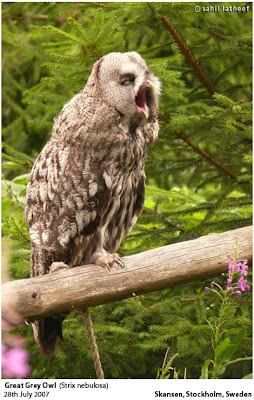
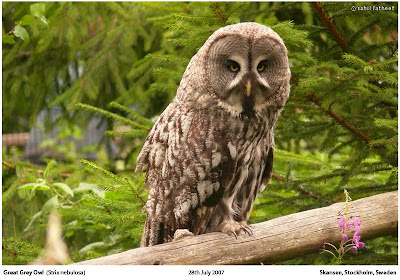 Here's one more pic of this majestic beauty.
Here's one more pic of this majestic beauty.View Larger Map
The above Google map shows the outline of Skansen. You can zoom in to see the park better.
Labels:
Aquarium / Zoo / Captive,
Birds,
Mammals,
Sweden
Aquaria @ Stockholm
Also managed to seek in Aquaria while in Stockholm. Though this Aquarium is very small and occupies a very cramped location next to the harbour while on your way back to the city centre from Skansen I have to say that it's the best small Aquarium I have seen yet.
I have seen quite a few Aquariums of similar size (especially in India) and none have such an interesting design layout or ambition.
 Check out the above design layout courtesy their website - http://www.aquaria.se/
Check out the above design layout courtesy their website - http://www.aquaria.se/
As one walks thru this tiny Aquarium you see many different habitats.
 Starting it a small Rainforest section (with down pours every 15 minutes) all with an nice pond full of tropical fish, tree frogs and also a couple of species of waterbirds.
Starting it a small Rainforest section (with down pours every 15 minutes) all with an nice pond full of tropical fish, tree frogs and also a couple of species of waterbirds.
 Next up, a section on the importance of Mangroves, followed by a Marine tank with an artificial coral reef (not pictured).
Next up, a section on the importance of Mangroves, followed by a Marine tank with an artificial coral reef (not pictured).  The last indoor section is called the Nordic Waters and is dedicated to local fish life.
The last indoor section is called the Nordic Waters and is dedicated to local fish life.
 And just when you think you're done with it all and you step outside on a nice deck facing the bay you see (what according to me is the best part of the Aquaria) the Fish Ladder.
And just when you think you're done with it all and you step outside on a nice deck facing the bay you see (what according to me is the best part of the Aquaria) the Fish Ladder.
Over the past years the Aquarium has incubated, raised and successfully released large nos. of Sea Trout. A fish that is know to fight all odds and climb back upstream along small channels of water to go back to it's birth place to lay eggs.And amazingly some of the fish raised here have returned years later to do exactly that.
 I think that is a great achievement - to release these fish into the open bay and seas beyond and to see them come back. Here a view of the bay and the city across it (the fish ladder is to the left of the snap connecting the Nordic waters section to the open bay thru a series of small but steep steps of waterfall)
I think that is a great achievement - to release these fish into the open bay and seas beyond and to see them come back. Here a view of the bay and the city across it (the fish ladder is to the left of the snap connecting the Nordic waters section to the open bay thru a series of small but steep steps of waterfall)
I have seen quite a few Aquariums of similar size (especially in India) and none have such an interesting design layout or ambition.
 Check out the above design layout courtesy their website - http://www.aquaria.se/
Check out the above design layout courtesy their website - http://www.aquaria.se/As one walks thru this tiny Aquarium you see many different habitats.
 Starting it a small Rainforest section (with down pours every 15 minutes) all with an nice pond full of tropical fish, tree frogs and also a couple of species of waterbirds.
Starting it a small Rainforest section (with down pours every 15 minutes) all with an nice pond full of tropical fish, tree frogs and also a couple of species of waterbirds. Next up, a section on the importance of Mangroves, followed by a Marine tank with an artificial coral reef (not pictured).
Next up, a section on the importance of Mangroves, followed by a Marine tank with an artificial coral reef (not pictured).  The last indoor section is called the Nordic Waters and is dedicated to local fish life.
The last indoor section is called the Nordic Waters and is dedicated to local fish life. And just when you think you're done with it all and you step outside on a nice deck facing the bay you see (what according to me is the best part of the Aquaria) the Fish Ladder.
And just when you think you're done with it all and you step outside on a nice deck facing the bay you see (what according to me is the best part of the Aquaria) the Fish Ladder.Over the past years the Aquarium has incubated, raised and successfully released large nos. of Sea Trout. A fish that is know to fight all odds and climb back upstream along small channels of water to go back to it's birth place to lay eggs.And amazingly some of the fish raised here have returned years later to do exactly that.
 I think that is a great achievement - to release these fish into the open bay and seas beyond and to see them come back. Here a view of the bay and the city across it (the fish ladder is to the left of the snap connecting the Nordic waters section to the open bay thru a series of small but steep steps of waterfall)
I think that is a great achievement - to release these fish into the open bay and seas beyond and to see them come back. Here a view of the bay and the city across it (the fish ladder is to the left of the snap connecting the Nordic waters section to the open bay thru a series of small but steep steps of waterfall)
Subscribe to:
Posts (Atom)


